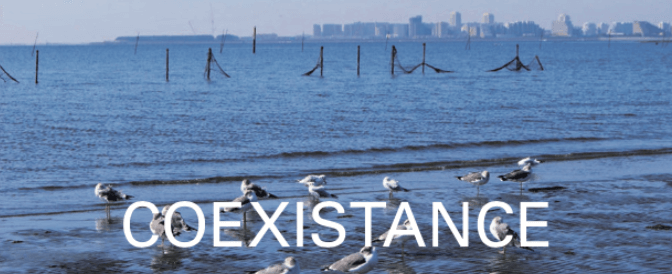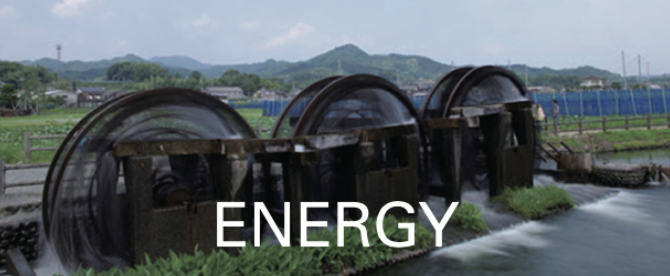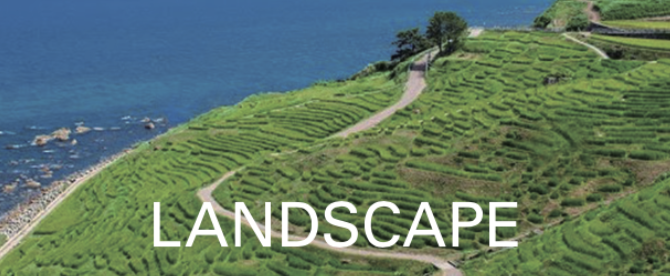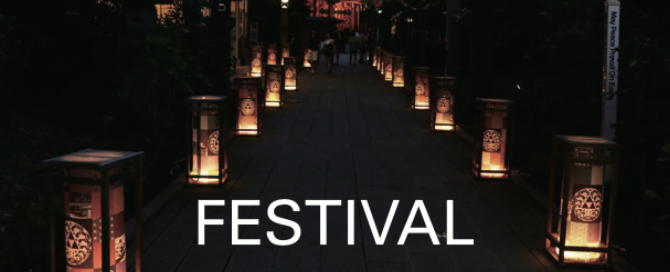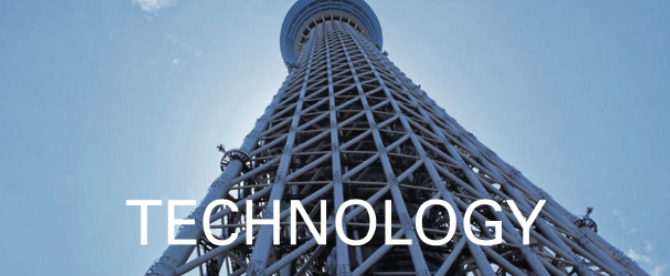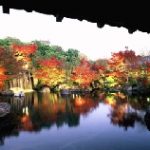
This garden’s landscaping was borrowed from Himejijo Castle, which was restored from the relics of Nishi Oyashiki, the feudal lord’s west residence. It was built by Honda Tadamasa (1575 – 1631), a feudal lord, a first lord of Himeji Domaine in Harima Province. In this garden, there is Choonsai, a guest house, and the garden has Chikuzan-Chisen, Hills and Ponds, borrowing the landscape of Himeyama virgin forest.
The scene of the virgin forest overlaps Himejioka hill according to Harimanokuni, Harima Province Fudoki, a description of Japanese regional climate, culture, and others. Himejioka hill was mentioned, where Himeko, the silkworm settled down from the wrecked God ship. This castle was built at that site.
The idea of making this garden overlaps the ancient and the early modern time. It is freely rich like a Furisode, a long-sleeved kimono, swinging.

This museum exhibits and introduces the achievements of Aizu Yaichi (1881-1956) and his art works. Yaichi was a literati born in Niigata City, and his achievement were in the field of art history, Tanka was a Japanese poem, consisting of thirty-one syllables and calligraphy. Yaichi’s Tanka – composed about Nara, the old capital, and his homeland – have been highly valued.
In his later life, he returned to his homeland of Niigata City. He made efforts to promote the culture of his homeland and concentrated on his calligraphy.
He wrote“Suishin, Transparent Mind”in indian ink, which came from Huainanzi, the ancient Chinese encyclopedia of the Former Han dynasty (BC206-8), too.
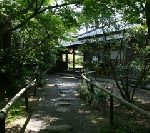
The Ishishima family sought to develop the Kambara plain, centering on the land reclamation of Fukushimagata, lagoon. They finally became one of the leading great landowners in Niigata prefecture and a leading wealthy farmer in Hokuetsu region (Niigata and Toyama). Ishishima Tei has a site of over 8,000 tsubo (26,446 m2) and a building area of over 6,000 tsubo (19,834 m2). Most of the building is a typical residential building from the beginning of the Meiji period (1868 – 1912).
Seigetu-en, a Japanese style garden, with a path around a central pond, surrounds the buildings. The garden has some monuments, inscribed with a poem, at spots, reflecting each of the four seasons. Those 12 buildings, including the front gate, the main entrance, Kogetsu-kaku, a reception hall (no longer exists), Nanzan-tei, a former residence house, Shorai-an, a tea room, Suigetu-an, a tea room, and Sekyo-sho, a monk’s preaching place, were designated as Niigata Prefecture cultural property in March 1962.
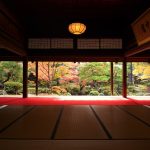
This museum opened the Ito family’s residence as a museum, and exhibits the collection of 6,300 items, which had been collected by the successive heads of the Ito family.
Representative works of art include [National important cultural properties] “Seson Yubai Bokuseki,” Zen style calligraphy of Seson Yubai (1290 – 1346), a monk in the Rinzai Zen sect, the poem of plum blossoms, “Ryokan – Shishobyobu,” a folding screen of poetry and calligraphy by Ryokan (1758 – 1831), a monk in the Soto Zen sect, a poet and a calligrapher, “Tosansai Bayo,” a lead, glazed horse-shaped pottery, in the style of the Tan Dynasty (618 – 907), that was mainly made for burial, [National important cultural properties],” a Seated statue of Dainichi Nyorai, the Supreme Buddha of the Cosmos and the central object in Esoteric sects of Buddhism,” “Senmen Maki-e Kazaridana,” a gold lacquered cabinet, with fun-shaped pictures, by Shibata Zeshin (1807 – 1891): a Japanese lacquer painter and print artist, “Kyoho-bina,” Japanese dolls in the style of the Kyoho era (1716 – 1736), representing an imperial couple in richly-layered costume.
In addition, there is a Japanese style garden with a path around a central pond, seen from the large, 100-tatami mat hall, created by Tanaka Taiami (1898 – 1978), a landscaper who came from Kashiwazaki Niigata. It took 5 years to make. Taiami was a genius gardener, known for excavating and reconstructing stone structures of waterfalls and wells in the Ginkakuji temple, Kyoto.
The garden has a beautiful expression every season. A great wisteria trellis at the site is at its best in May and is also popular with many visitors.
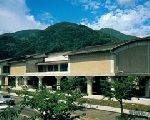
A Tea bowl, of which the lower half is blackish brown both inside and outside, with white glaze, resembles a snow-capped Mt. Fuji. It is the beauty of Japan to reminisce. This museum, overlooking Lake Suwa, possesses about 1400 items, a set of tea things, antique calligraphies and painting, and modern Western paintings, including White Raku Chawan, a hand-moulded earthenware tea bowl, named Fujisan, Mt. Fuji, which Hon’ami Kouetsu (1558 – 1637), a Japanese craftsman, potter, lacquerer, calligrapher and a founder of the Rinpa school of painting, gave to his daughter in her marriage.
You can enjoy the magnificent scenery of the four seasons, with Lake Suwa in front of this museum, including Omiwatari, a phenomenon on Lake Suwa, where ice cracks in large sections, called “the path of God crossing,” for the visiting Goddess who crosses the lake from a legend.

This museum collects the works of artists related to Gifu, who left important footprints in the history of modern Japanese art, such as Kawai Gyokudo (1873 – 1957) and Yamamoto Hosui 1850 – 1906) a Japanese artist, and teacher to introduce the French style of the Barbizon school in Japan.
A young hawk perched on Oimatsu, an old pine tree, was painted with the soft light of glory, in the pair of 6 folding screens. The old pine tree symbolizes longevity and the hawk symbolizes nobility, drawn with ink-lined on the gold base.
Gyokudo was born in Aichi and grew up in Gifu, who studied and worked together Kono Bairei (1844 – 1895), a Japanese painter and art teacher, who established Kyoto-fu Gagakko, Kyoto Prefectural School of Painting, the future Kyoto City University of Arts, and learned and followed Hashimoto Gaho (1835 – 1908), a Japanese painter who created many works in the traditional style of the Kanou school, and Okakura Kakuzo Tenshin (1862 – 1913), a Japanese scholar, contributed to the development of Arts in Japan and is the author of The Book of Tea.
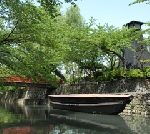
Oku no hosomichi: the Narrow Road to the Deep North, the major texts of poems and essays as a travel journal by Matsuo Basho (1644 – 1694), the most famous poet of the Edo period, ended at the place of Ogaki. Funamachi Harbor in Ogaki, which Basho visited four times, was the river port of the Canal of the Suimongawa River.
This canal was an outer moat of Ogakijo Castle, and a shipping canal which connected Ogakijo castle town and Kuwanajuku Post Town on the road to the Ise Province Mie, through the Ibi River. This canal transported people and goods between Oagaki and Ise in the Edo period (1603 – 1868), and the Meiji period (1868 – 1912).
The Sumiyoshi Lighthouse at Funamachi Harbor was built in the the Genroku era in the Edo period (1688 – 1704). The end of Basho’s journey was Ise, which was always a place of the elegance of poetic unconventionality, through his thoughts. The Lighthouse still illuminates the aspiration of the journey to Ise.

World Heritage Site, this shrine at Miyajima Island was founded in the 6th century and remodeled in the 12th century, like a pier over the water, by Taira no Kiyomori (1118 – 1181), a head of Taira clan who established the first samurai dominated administrative government in Japan.
The Momijidani Park spreads along the Momijidani river on the mountain side of Itsukushima Shrine. The Park began with Momiji plants, Maple seedlings during the Edo period (1603 – 1868).
This park was swallowed by debris flow in the Makurazaki Typhoon in 1945. Disaster restoration lasted two years. Stones were used in their natural form, trees were not cut, and the concrete face was wrapped, not to touch the eyes.
This beautiful park is considered a well to safety and the natural environment.

This museum does not hold permanent exhibitions, but holds temporary exhibitions that showcase its collections under its own theme four or five times a year, and special exhibitions that introduce the excellent collections of other museums once or twice a year.
This museum introduces the calligraphies, painting by Ikeda Tsugumasa (1702 – 1776), who was the 3rd lord of the Okayama Domain and his belongings, and his Dogu, belongings. Tsugumasa ruled the domain for 38 years, and was a wise ruler, who became the feudal lord from his adopted family. Japanese are awe-inspired by nature.
Tsugumasa, who was a Bunjin Daimyo, a feudal lord of a literary school, had cultivated his Kokorono Keikan, visionary mind, during his fateful tour, much like Tsukimi, viewing the moon over the artificial hill of Okayama Korakuen, one of the Three Great Gardens of Japan, along with Kenroku-en, and Kairaku-en.
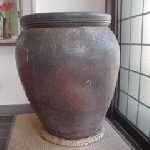
This museum introduces the history of Bizen ware, the ware that is said that has become Sueki, which is one of Rokkoyo, the six oldest kilns in Japan. This museum exhibits the bowl of Umiagari, Ko Bizen ware pulled up from a ship sunk in the Seto Inland Sea, which is an object of envy for dilettantes. It spent a long time in the mud on the bottom of the sea, which combines the mystery and freedom in the beauty of the tasteful, porcelain surface.
In addition, this museum exhibits refractory brick, which has been a core industry of Bizen City since the Meiji period (1868 – 1912), and introduce the materials of Shibata Renzaburo (1917 – 1978), a Japanese author and sinologist, associated with this city.
– Shibata Renzaburo wrote the Novel “Nemuri Kyoshiro”: Kyoshiro is an outlaw swordsman who combined mystery and freedom in the beauty.

The castle was built on a beautiful hill of Japanese red pine trees after the Battle of Sekigahara in 1600. There is a garden that expresses its beauty with running water and vegetation in the Ninomaru, the Palace that served as the residence of the Matsuyama Castle Lord. There is a garden of citrus and plants at the site of Omote Goten, the Palace of public use and there is a flowing water garden at the site of Ura Goten, the Palace of private use.
A balloon flower blooms from July to August, and a crepe myrtle blooms from August to September. This place is a source of innocence which a hometown artist, Sugiura Hisui (1876 – 1965), graphic designer, a pioneer of modern Japanese graphic design, had conveyed through Art Nouveau designs.
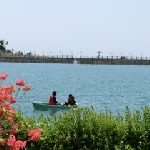
The rest station, Enju-tei remains at this park, which was arranged as the exclusive pleasure-garden for the Goto family, the chamberlain of the Tosa Domain, at the end of the Edo period (1603 – 1868).
A lot of azaleas bloom around Bentenike Pond, created as a reservoir, from spring to early summer, and a festival is held. Enju-tei and azaleas appear as the remnant of the elegance of poetic unconventionality, by the Goto family, who had supported their lord, the Yamanouchi family, since the Age of the Provincial Wars in the 15th – 16th centuries.
The pottery of Uchinohara also remains near this park, which was established by the lord of this place, the Goto family.
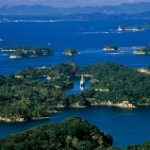
Kujuku Islands are a rias coastal archipelago, located 25 km north from Sasebo Port. Most islands are uninhabited and the total number of islands is now officially 208. Kuroshima Island floats there, where Christians had lived underground for more than 200 years. You can enjoy landing on uninhabited islands and looking at the landscape from the boat.
You can also feel the early modern times of Japan in overlapping the landscape and the history of underground Christians, who had endured hardships and protected their faith without priests and Fathers, and endured irrational.
